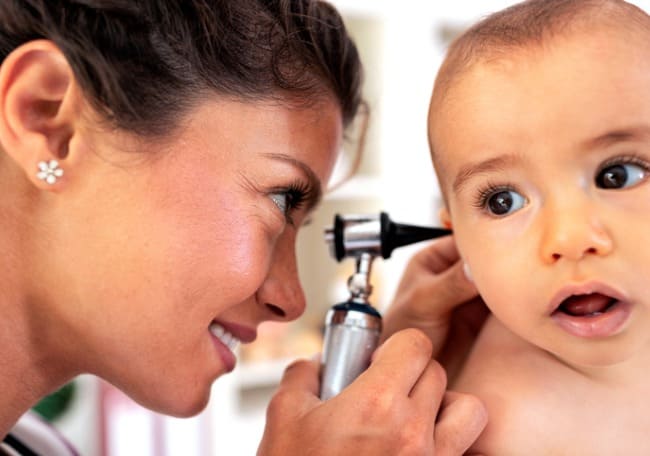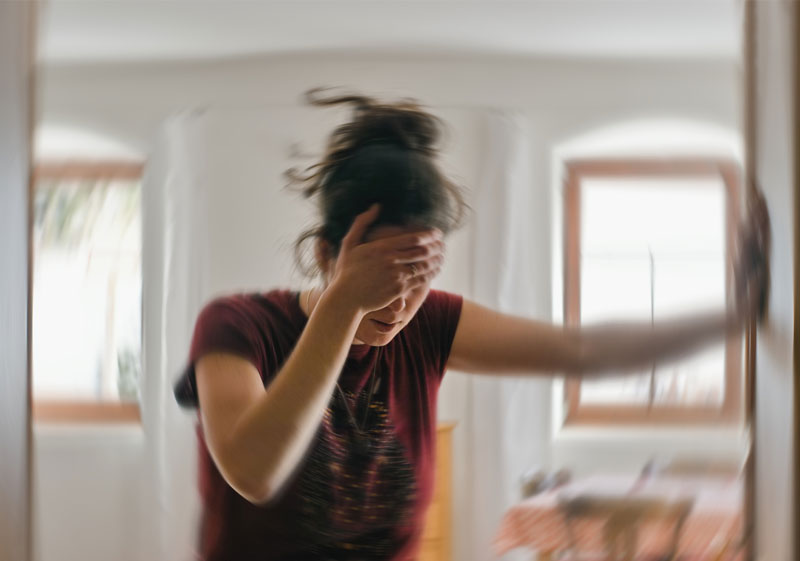Infecciones óticas y estabilidad postural

[1] P. J. Robb and I. Williamson, “Otitis media with effusion in children: current management,” Paediatrics and Child Health, vol. 26, no. 1, pp. 9–14, 2016.
[2] R. M. Rosenfeld, J. J. Shin, S. R. Schwartz et al., “Clinical practice guideline: otitis media with effusion (update),” Otolaryngology–Head and Neck Surgery, vol. 154, Supplement 1, pp. S1–S41, 2016.
[3] I. Williamson, “Otitis media with effusion in children,” BMJ Clinical Evidence, vol. 2011, 2011.
[4] E. N. Myers, M. Koyuncu, M. M. Saka et al., “Effects of otitis media with effusion on the vestibular system in children,” Otolaryngology—Head and Neck Surgery, vol. 120, no. 1, pp. 117– 121, 1999.
[5] M. L. Casselbrant, R. J. Villardo, and E. M. Mandel, “Balance and otitis media with effusion,” International Journal of Audiology, vol. 47, no. 9, pp. 584–589, 2008.
[6] W. Gawron, L. Pospiech, and K. Orendorz-Fraczkowska, “An evaluation of postural stability and the effects of middle-ear drainage on vestibulo-spinal reflexes of children with chronic otitis media with effusion,” International Journal of Pediatric Otorhinolaryngology, vol. 68, no. 9, pp. 1175–1179, 2004.
[7] A. G. Schilder, M. F. Bhutta, C. C. Butler et al., “Eustachian tube dysfunction: consensus statement on definition, types, clinical presentation and diagnosis,” Clinical Otolaryngology, vol. 40, no. 5, pp. 407–411, 2015.
[8] M. L. Casselbrant, J. M. Furman, E. M. Mandel, P. A. Fall, M. Kurs-Lasky, and H. E. Rockette, “Past history of otitis media and balance in four-year-old children,” Laryngoscope, vol. 110, no. 5, pp. 773–778, 2000.
[9] E. A. Said, M. K. Ahmed, and E. S. Mohamed, “Role of vestibular testing in deciding treatment strategies for children with otitis media with effusion,” Egyptian Journal of Ear, Nose, Throat and Allied Sciences, vol. 16, no. 2, pp. 151–159, 2015.
[10] P. van Cauwenberge, J. B. Watelet, and I. Dhooge, “Uncommon and unusual complications of otitis media with effusion, International Journal of Pediatric Otorhinolaryngology, vol. 49, pp. S119–S125, 1999.
[11] R. Reddy, “Eustachian tube: its functions and dysfunctions in relation to the pathogenesis of middle ear,” Journal of Evidence Based Medicine and Healthcare, vol. 1, no. 6, pp. 387–390, 2014.
[12] K. Takasaki, H. Takahashi, I. Miyamoto et al., “Measurement of angle and length of the eustachian tube on computed tomography using the multiplanar reconstruction technique,” Laryngoscope, vol. 117, no. 7, pp. 1251–1254, 2007.
[13] S. Saxena, B. K. Rao, and S. Kumaran, “Analysis of postural stability in children with cerebral palsy and children with typical development: an observational study,” Pediatric Physical Therapy, vol. 26, no. 3, pp. 325–330, 2014.
[14] M. L. Casselbrant, M. S. Redfern, P. A. Fall, J. M. Furman, and E. M. Mandel, “Visual-induced postural sway in children with and without otitis media,” Annals of Otology Rhinology and Laryngology, vol. 107, no. 5, pp. 401–405, 1998.
Comentarios
Para ver los comentarios de sus colegas o para expresar su opinión debe ingresar con su cuenta de IntraMed.







